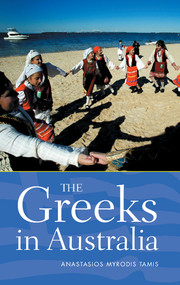7 - From Migrants to Citizens
Published online by Cambridge University Press: 22 September 2009
Summary
The years of marginalisation and integration
The history of Greek migration and settlement in Australia represents the massive transplantation of approximately 300 000 Hellenes during a period of more than a century (1850–1974). During this period, Greek and Cypriot settlers arriving as migrants to Australia, progressively transformed into citizens with an enhanced social presence, consolidated their economic and cultural status, and overcome restrictive immigration policies and attitudes.
The Greek community remained without consular representation and community organisation during the first fifty years after the arrival of the first pioneer immigrants to Australia. The Greek state, during the early period of Greek migration, did not display any substantial interest in providing such representation due to the distance and the geographical isolation, the lack of efficient communication and the lack of support in any trading alliances. According to a report from the Greek Ambassador in London in 1895:
In any case, the need for a Consulate or any other Consulative Authority in Australia does not arise at all. The large number of Greek traders in Australia are not in any position to develop important trade relations between Greece and Australia, nor could the appointed Consuls to various cities in Australia be able to contribute to this cause.
(Ambassador A. Gomanos's Report to the Minister of Foreign Affairs in Greece, no. 87, F1895/49/25/9, March 1895, Archives, National Centre for Hellenic Studies and Research, La Trobe University)Trade with Greece was restricted, with some success, to the importation of raisins until approximately 1910 when local production started in Mildura.
- Type
- Chapter
- Information
- The Greeks in Australia , pp. 165 - 196Publisher: Cambridge University PressPrint publication year: 2005



